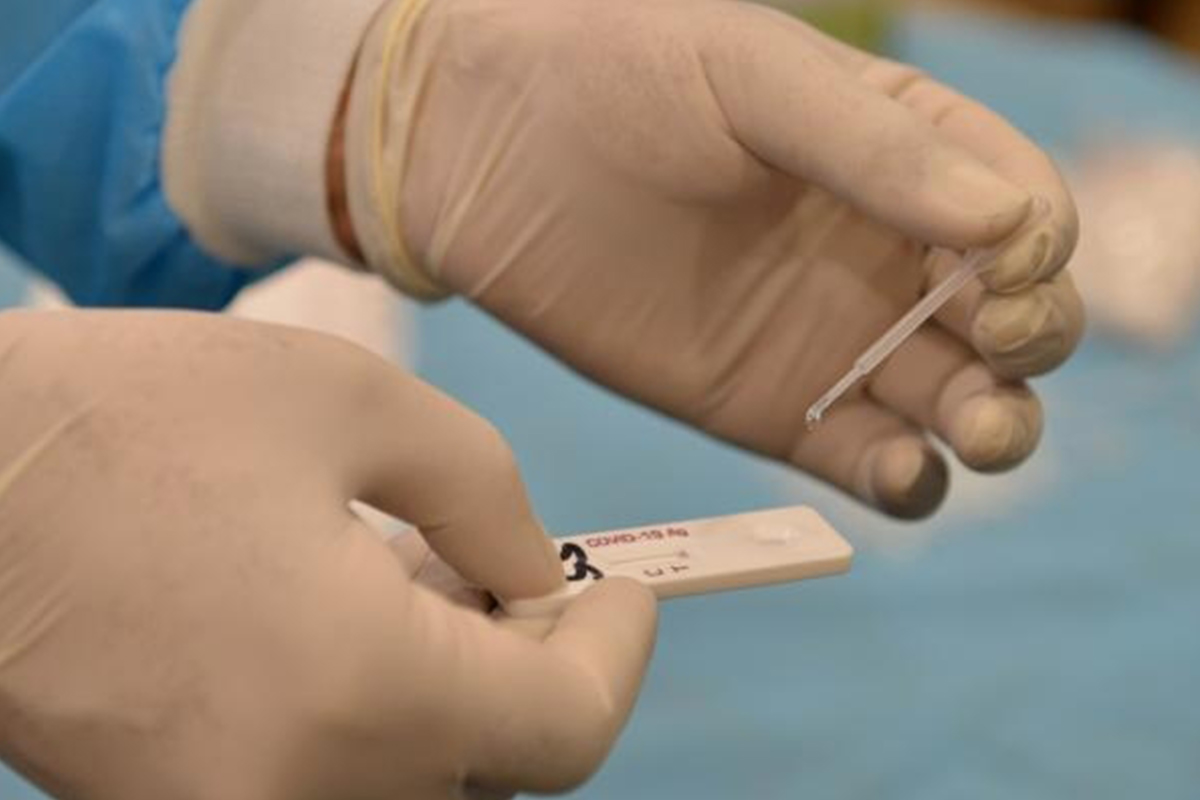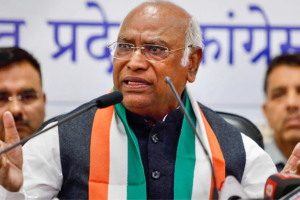The second wave of COVID 19 infection has caught India on its backfoot and has caused a national turmoil. As the nation was settling down from the previous COVID onslaught, and getting back towards normalcy, it was struck by the second wave in the midst of re-opening of previous restrictions, democratic elections, multireligious festivities and large gatherings.
The epidemic started initially in Maharashtra and has rapidly spread over the entire nation. There was indeed a difference from the previous experience. This time around it was the mutated virus with high infectivity, largely affecting the younger population, spreading like wild fire andwith a higher mortality. The rapidity of spread caught the nation unawares. The immediate need was to continue the COVID appropriate behavior and we as a society needed to comply and achieve the objective of reducing the spread.However, people had just come out of fatigue ofprolonged period of restricted living and economic distress and were out to earn their livelihood. The re-opening of malls, cinema halls, eateries etc.was an attraction driving people into complacent behavior.People put down their masks and ignored physical distancing. The governments, too, were not adopting strict containment measures and acceleratetesting, tracking, isolation and treatment strategy. The experience of previous national lockdown whereby we were able to reduce infection and save lives but at the expense of immensepain, suffering and loss of livelihood to millions, is still rife in our minds.Limited lockdown in some cities and major hotspot areas has been imposed with some effect.
Advertisement
A complete national lockdown has been considered as a last resort. However, there are lessons to be learnt from the second COVID spike in UK. Despite implementing a robust testing, tracking, isolation and treatment policy, they were reluctantly forced into a second lockdown. Certainly, it may not be necessary in India if we are able to break the chain, contain the infection and prevent loss of life with all other measures. The tools at hand are limited/national lockdown and simultaneous aggressive vaccination. But where are we as of now?
There is an exponential rise in infectiontoday and India has become the global epicenter. The story of sufferings, loss of life due to deficient health care facilities, shortages of oxygen andcertain drugsare becoming rampant.News hype about the efficacy of drugs like Remdesvir, Baricitinib, Tocilizumab etc.caused further confusion leading to reduced supply and black-marketingof the drug which in any case may not be lifesaving and with no definite evidence of mortality benefit.Oxygen supply hasdwindled and long queues of people at the wholesale suppliers of oxygen cylinders has become a common sight. Hospitals have started running out of oxygen in many cities severely jeopardizing patient care and deaths due to lack of oxygen are being reported. Bed availability has become scarce and people are dying at home for want of hospital beds. Those in hospitalare facing nightmares due to severe shortage of healthcare workers, who themselves are becoming COVID positive and getting isolated or admitted. Dignity in death is also jeopardized with long queues of dead bodies awaiting cremation.
We are clearly in a grim situation overall. The nation which received accolades globally for most efficient handling of COVID 1 and helping the rest of the world to fight the infection (including supplying vaccines), was now being looked upon as thenation needing foreign help to fight our battle.
The very robust and world acclaimed vaccine strategy of India has come under criticismwith a paradigm shift in thinking about universal vaccination irrespective of ageor co-morbidities, instead of phase wise vaccination. Needless to say, the more we can vaccinate, the more lives we would be able to save.However,even great strategies need time to work. Vaccinewould not be effective overnight and contain the current problem but would besuccessful in saving lives subsequently. The raging debates have centered around vaccination strategy, vaccine shortages and vaccination hesitancy while the problem israpidly spreading infection and needs urgent control now. Thegovernmentisacting on a war footingto increase vaccine availability and build capacity and successfully conducting the world’s largest vaccination programmewith 150 million shots being given till date. Despite the concerted effort the demand far outstrips the supply and needs to be addressed.
This is a timewe all need to work together to overcome the crisis. Strictly the tools for prevention of infection or severe disease and deaths are I. COVID appropriate behaviori.e.,masking, hand hygiene measuresand physical distancing which is the key to prevent spread and 2. Vaccination.
The Problem and Solutions:
1. Contain the rapidly spreading infection:Everyday about 4 lac people are testing COVID positive and it is estimated that for every positive, there are 4-5 others who are infected but have not been tested.It is therefore likely that about 12-15 lac people are getting infected every day. This is mind boggling and unless the spread is controlled, it willstretch any amount of healthcare infrastructure to its limits no matter how much capacity building we do.The entire world witnessed how the excellent American and European healthcare system crumpled during the first phase of COVID pandemic.
The immediate need, therefore,to contain the infection by is by physically distancing people. It is unlikely to be done voluntarily by people themselves unless statutorily mandated. Hence, the need for lockdownis the need of the hour. However, we’ve already experienced the huge economic fallout of this exercise last year and hence should be used only asa last resort. On the other hand, the night curfews and weekend lockdownshave proven to be ineffective. Hence, a strict regional lockdown for at least 2 weeks in areas with 10% or more positivity rate should be imposed. If implemented strictly this will be able to break the infection transmission chain. Depending on the outcome of pushing down the positivity rate, a phase wise relaxation of restrictions and re-opening can be implemented.
2. Increasing healthcare infrastructure:is of paramount importance and an essential requirement for massive magnitude of COVID care. The increase cannot happen unless all large institutions (government or private) with bed capacity of more than 200-300 are mandated to have 70-80% COVID beds and the rest20-30% for non-COVID patients.20-30% percent of total COVID beds should have ICU/HDUfacilities.
• Dedicated COVID hospitals may be set up by the armed forces in major hotspot areas.
• Beds with oxygen supply facility should be created in appropriate places like Banquet
• Halls /Hotels etc.(under supervision of hospital where patient could be transferred if required.)
• There is an urgent need to curtail industrial oxygen and increase medical oxygen supply.
• Urgent provision for increasing capacity for cremation should be created by district. Authority with single agency allocating cremation site and time.
• Home isolation should be encouraged with proviso of home support if require(provided by government/NGO’s/private public collaboration models.)
• The bed availability and allocation ideally should be done by a single agency.
• Health is primarily a state subject and each state must use all resources at hand to control infection. There is greater need to collaborate and cooperate between centre and state without any blamegame.Thecenter should concentrate its efforts on procurement and provide seamless supply of vaccine, oxygen and drugs to states wherever required.
3. Urgent need to increase healthcare workers:Increasing healthcare infrastructure is only beneficial if manned by trained nurses, doctors and paramedics. There is currently a significant shortage of medical,nursing and paramedical staff which can make any healthcare facility a dangerous place to be in. There is therefore an urgent need to increase skilled personnel.
I would entirely endorse the views of some doctors in this regard.It needs flexibility by the Regulatory and Licensing Bodies. If vaccines and drugs can be given emergency use authorization in pandemic times, then a large number of trained healthcare personnel who are awaiting to appear and pass exams or awaiting registration should also be considered for exemption on defined criteria and employed in massive scale COVID care required today.
• A large number of medical interns (about 80,000) who have completed their MBBS should be deployed in COVID care and given marks advantage for PG exam and preference in government jobsas incentive.
• More than 2 lac nursing students who have completed training and awaiting exams should be offered license if they work for at least 1 year in COVID patient care and also preference for future government jobs.
• Recognition by NMC of Diploma in Emergency Medicine/ Critical Care which was notpreviously recognized by MCI, would add thousands of trained medical doctors for managing COVID ICU’s.
• About 20,000 doctors who have graduated from foreign medical schools and have not cleared the Indian Entrance Exam may also be offered registration in exchange for 1-year work in COVID care under supervision.
These are some practicalsuggestions which should be considered during this catastrophe.
We all need to work together in this war- like situation to overcome the crisis.We have overcome many challenges facing this nation – this too shall pass.











